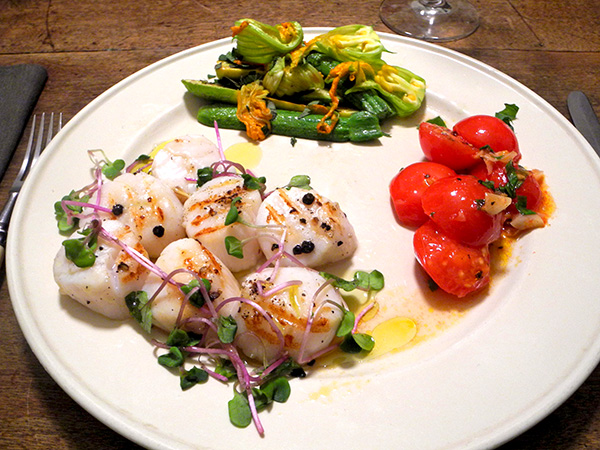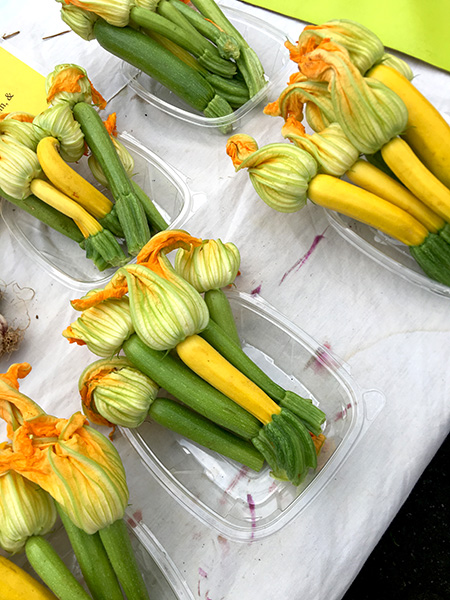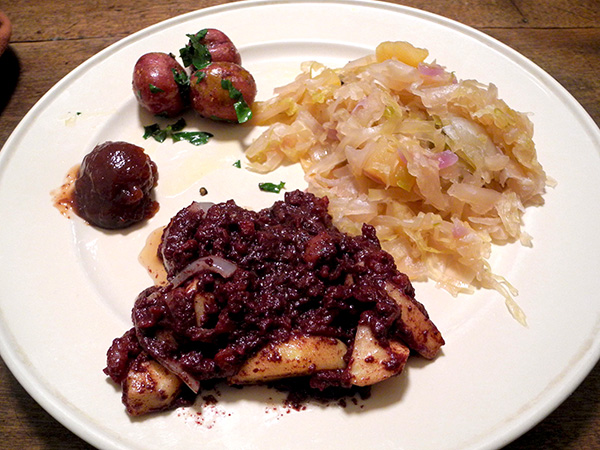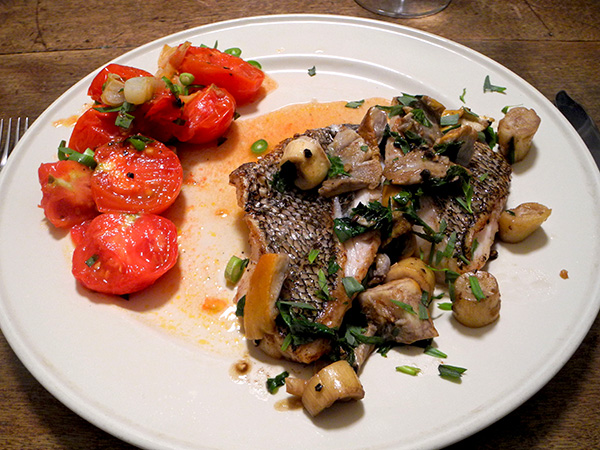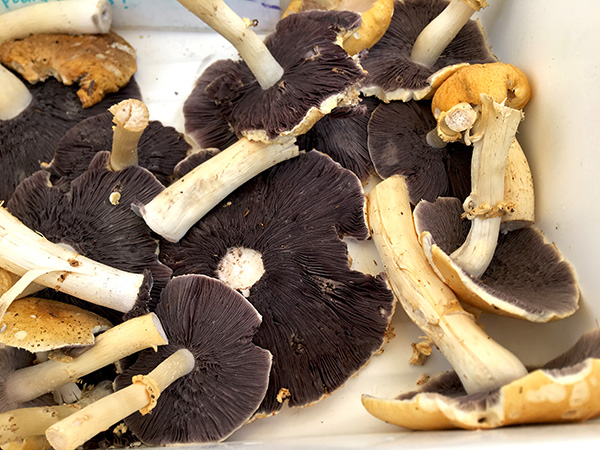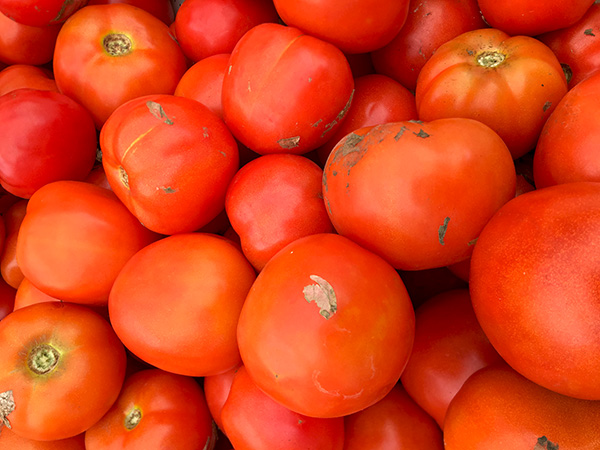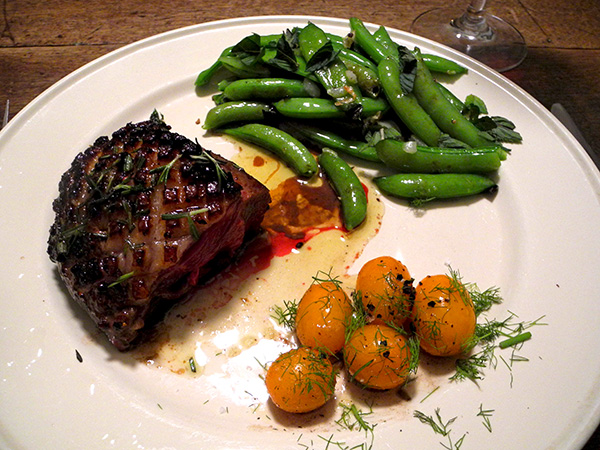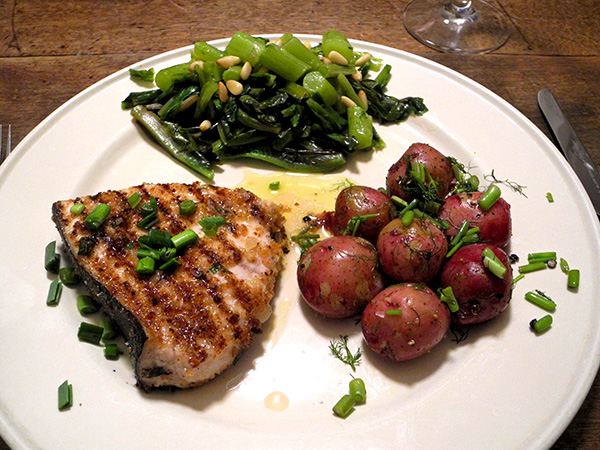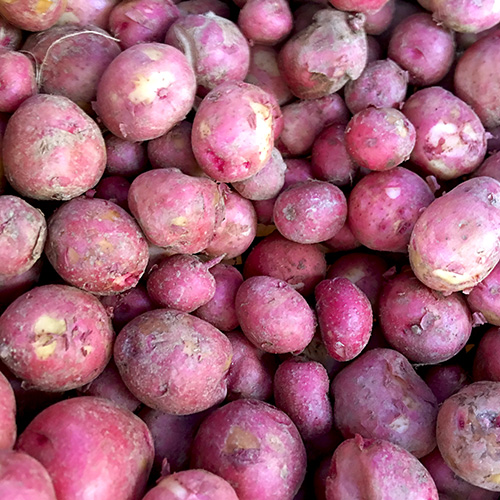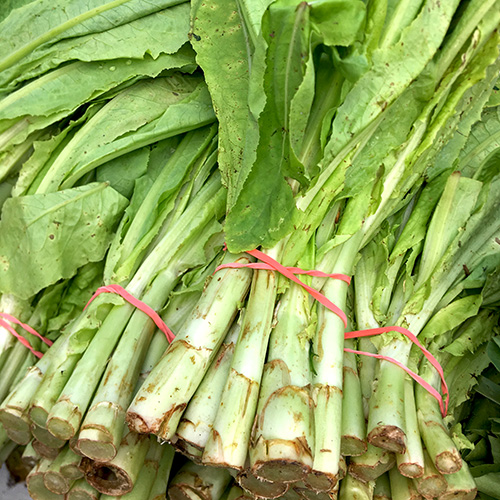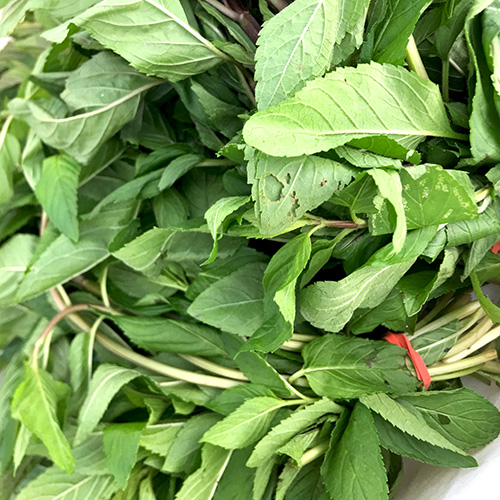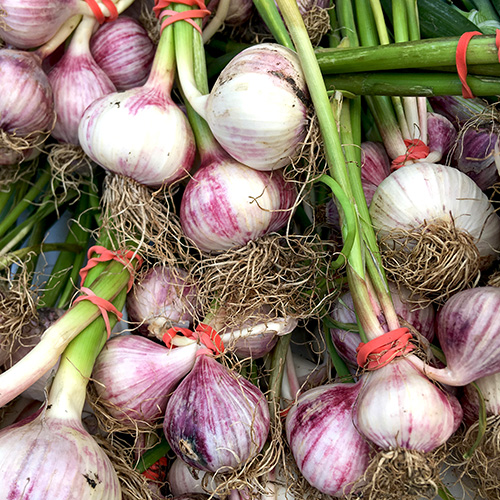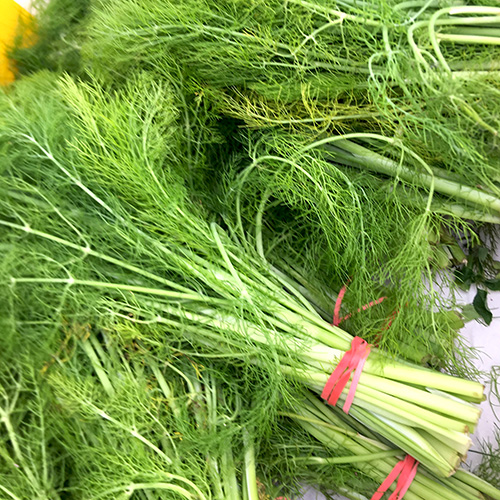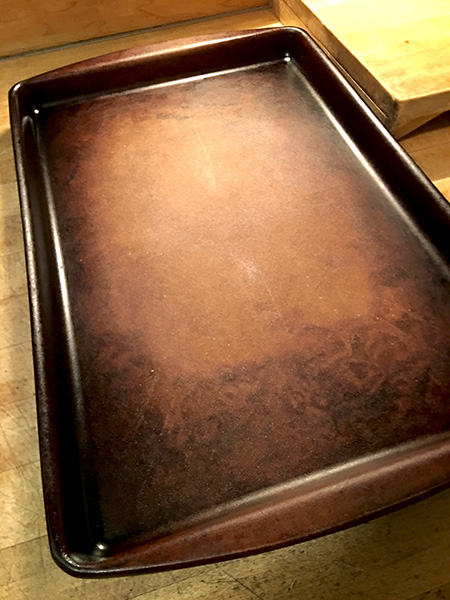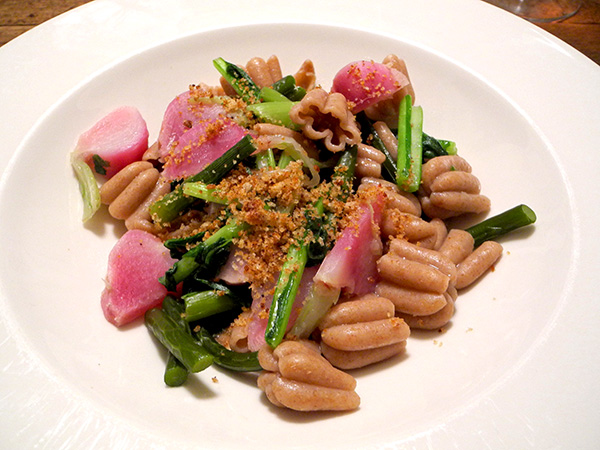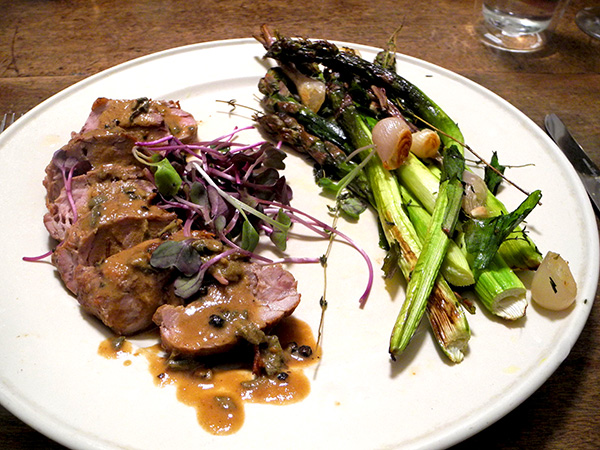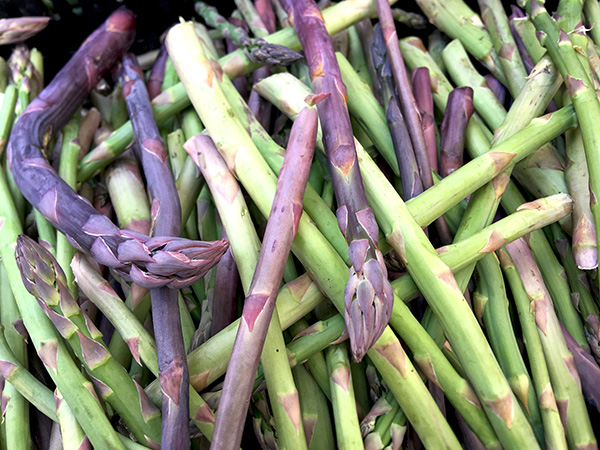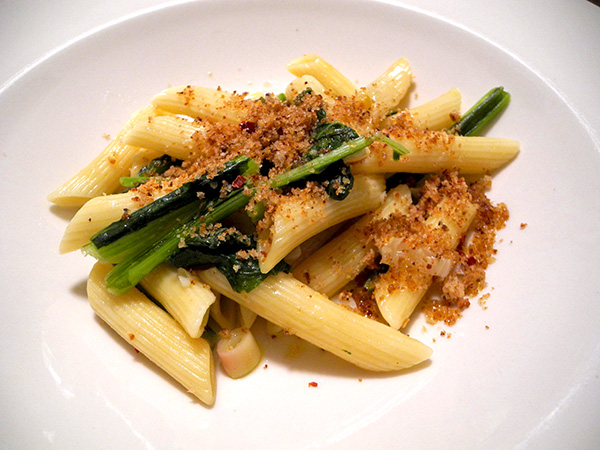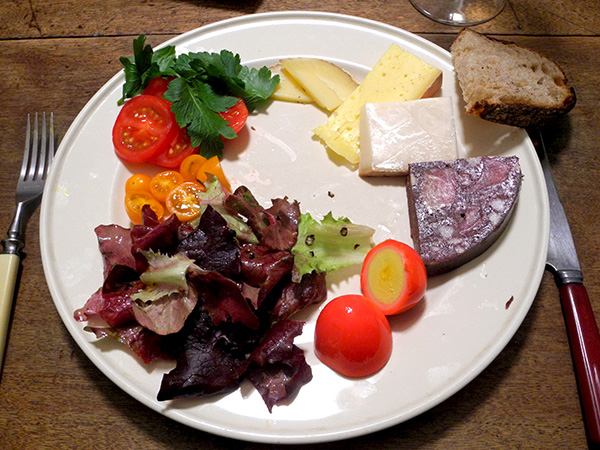
Barry and I used to call meals like this ‘picnics’. More recently, in the case of particularly German versions, I’ve labelled them ‘Picknicks‘ on this blog. In fact, the appropriate German term would be ‘Brotzeit‘, and that’s how I’ve described this one.
The gorgeous lettuce included on the plate is a purple variety whose name was not indicated on the stand where I purchased it. The only lettuce image I snapped that afternoon was actually of a green version of the same breed, and at the time it just happened to be boasting a single purple leaf from its neighbor.

- with the exception of the oil, vinegar, salt, pepper, butter, and confiture, the items included on the plate were essentially from local sources: Blutwurst or Zungenwurst, a variation of head cheese, from Schaller & Weber; a dollop of Italian (Asiago) Lingonberry Jam (a berry much like the German ‘Preiselbeeren‘) [not pictured]; purple lettuce from Norwich Meadows Farm, dressed with an Italian olive oil, Alce Nero DOP ‘Terra di Bari Bitonto’, from Eataly, an Italian white wine vinegar, Aceto Cesare Bianco, from Buon Italia, Maldon salt, and freshly-ground Tellicherry pepper; orange cherry tomatoes grown in Ontario, from Whole Foods Market; large red cherry tomatoes from Alex’s Tomato Farm; Isny Allgäu ‘Adel Egger’ raw milk cheese, from Schaller & Weber, and ‘Danby” goat cheese and ‘Rupert’ cow cheese, both from Consider Bardwell Farm; 2 Rot-gebeizt pickled eggs from Millport Dairy Farm; slices of a Balthazar rye boule from Schaller & Weber, and ‘Kerrygold Pure Irish Butter‘ [not pictured]
- the wine was a German (Mosel) white, Weingut Axel Pauly Trinkfluss 2014
- the music was the album, ‘The Palais-Royal‘, compositions from the Paris palace and court of Phillip II, Duke of Orléans, Regent during the long minority of Louis XV, and a composer himself

Phillippe II, Duke of Orléans, detail of a 1706 portrait attributed to Jean-Baptiste Santerre [image from Online Galleries]
